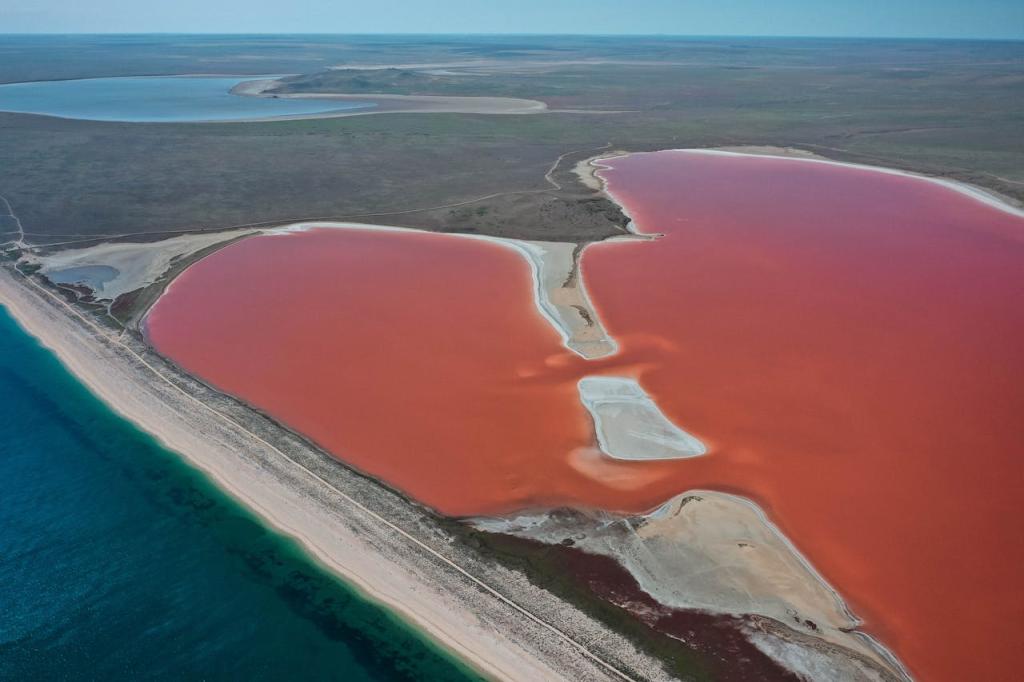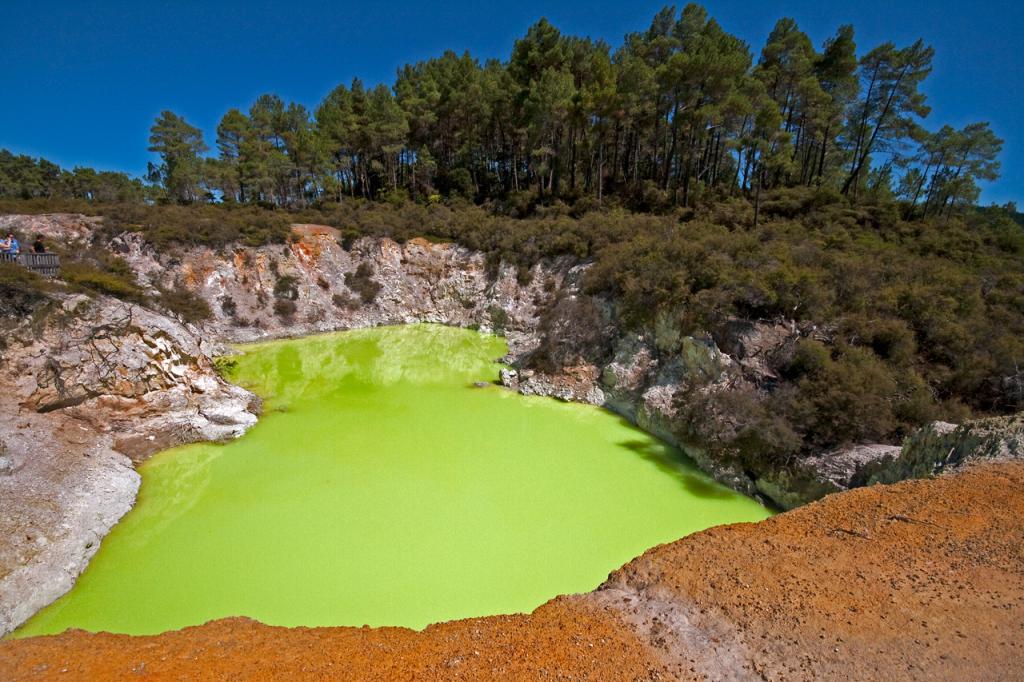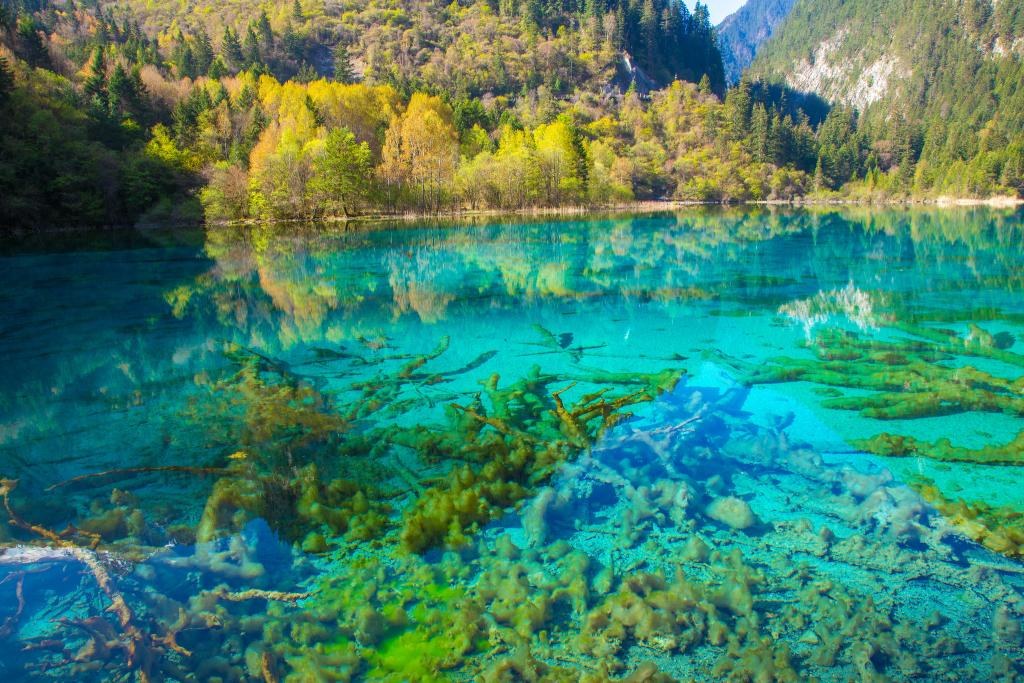
“Drive until the map turns blue,” Brad Paisley sings in one of his songs called “Water.” Typically, he’s not wrong. Due to concentrations of algae, molecule interactions, and the water’s reflection of the sky, lakes are ordinarily blue. However, this isn’t always the case. For various reasons, several lakes worldwide boast shades of bright green, pink, and dark red. Today, we’re celebrating some of the most stunning, colorful lakes across the globe.
el Djerid, Tunisia

This large, endorheic salt lake in Tunisia is the largest salt lake in the Sahara desert and possibly on the African continent. Its name is translated from Arabic as “Lagoon of the Land of Palms,” since the number of date palm trees outnumber people in this region. The mixture of saltwater and minerals creates its distinctive pink color. Juxtaposed with the barren surroundings, it’s a unique look. (No wonder it was a filming location for Star Wars!) Since this lake is in the middle of an unforgiving desert climate, if you visit, make sure you have enough gas!
Devil’s Bath, New Zealand

Imagine a lake the same shade as the Mystery Machine from Scooby Doo. You’ve pretty much got Devil’s Bath, a neon green geothermal pool in New Zealand. The country is known for its volcanoes and massive mountains, but this body of water is unique. Its blinding lime green color comes from sulfur deposits that rise to the water’s surface, and the resulting look is both ominous and cartoonish at once.
Los Colorados Yucatán, Mexico

“Los Colorados” means “The Red” in Spanish — the same word from which our state “Colorado” is derived. Although the lake isn’t exactly red, it’s certainly a variation. Near a small fishing village in Mexico is a stunning bright pink lake. It is located in the Rio Lagartos Biosphere Reserve, home to animals like flamingos, sea turtles, and crocodiles. The lake’s pink color comes from brine shrimp (which attracts the flamingos) and plankton, a type of red algae.
Kelimutu, Indonesia

Who says fire and water can’t coexist? Kelimutu is a volcano with three lakes that rest in its craters, each of them a different color. Depending on the balance of volcanic gas and rainfall, various oxidation-reduction levels occur, resulting in distinctive, colorful lakes. Sometimes, its lakes’ hues will change as many as six times in less than a year. They’re practically a natural version of a mood ring. It’s no wonder that Kelimutu National Park is such a prime tourist attraction in Indonesia.
Lake Hillier, Australia

This small landlocked salt lake off the coast of Western Australia is revered for its Pepto-Bismol pink color. Although its color isn’t fully understood, some possible explanations are the presence of Dunaliella algae that produce a pink pigment or a chemical reaction between salt and sodium bicarbonate. Either way, it’s incredible. And next to the Pacific Ocean, the juxtaposition of adjacent pink and blue shades are incredibly gorgeous.
Five Flower Lake, China

Located on the UNESCO World Heritage site of Jiuzhaigou National Park, Five Flower Lake is a top tourist attraction. This 16-foot-deep lake does not freeze in the winter and remains constant all year long. However, its colors do change. Depending on the day, you might see this lake as turquoise, emerald green, or sapphire blue. Regardless of the shade, its beauty is magnificent. Against a backdrop of five mountains, it’s certainly worth a visit.
Which colorful lakes are you adding to your list of future travels?

